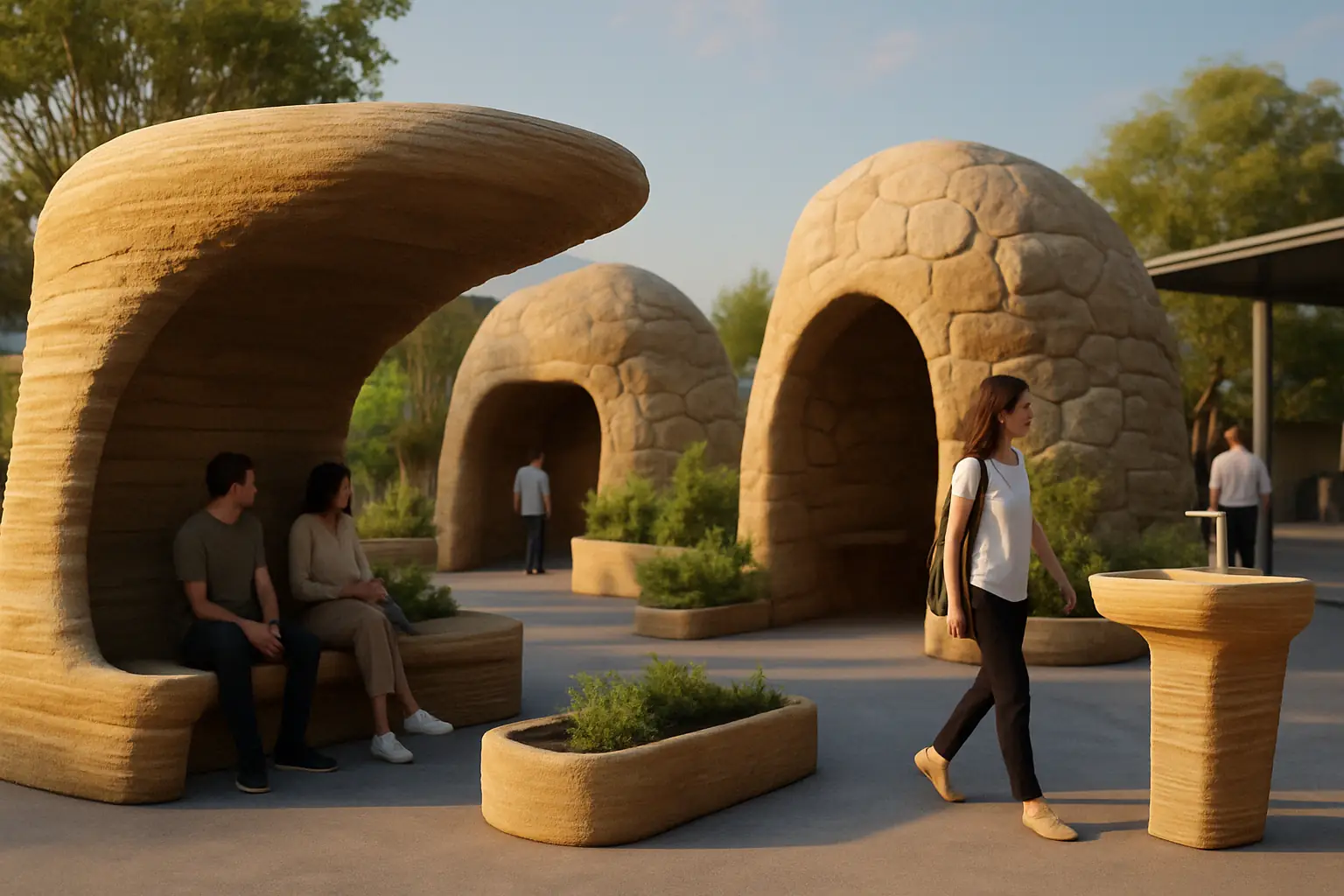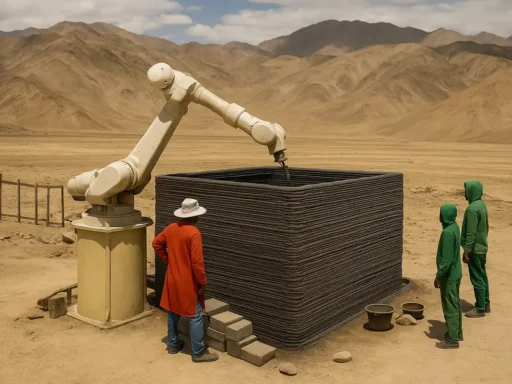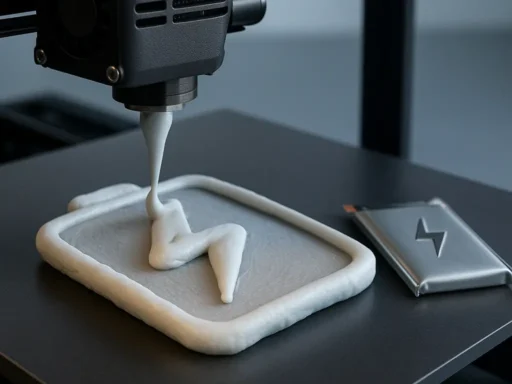Japanese architecture studio Aki Hamada Architects has deployed WASP 3D printing to build unique bio-based rest facilities for Expo Osaka 2025.
Each edition of the World Expo brings cultures and technologies from around the world crashing together in an effort to find solutions to the biggest challenges facing our planet.
Now open in Osaka, Japan, this year’s event has taken that commitment to modernization a step further. Not only is the show a bustling innovation showcase, the facility itself features 3D printed rest areas, satellite studios, and pop-up stages, all made from eco-friendly materials.
Using a Crane WASP system, these structures have been assembled layer-by-layer from a mix of soil, clay, hardening agents, straw, pigments, and (taking inspiration from traditional Japanese methods) seaweed glue. Sourced locally, these ingredients didn’t just prove 3D printable, they were chosen due to their strength and biodegradability (allowing for their post-show recycling).
Designed to look like stones collected from across Japan, the resulting builds pair organic, curved, overhanging surfaces with a structural logic that allow them to be free-standing.
For the venue’s exterior, a total of 56 panels measuring 1200 x 930 mm were 3D printed, embedded with wooden supports, and shipped to site. Though each panel has a distinct form, they slot together to create the illusion of a natural rock face. On-site, earthen blocks and bench planters have also been 3D printed for people and plants to cohabit throughout the event.
Lastly, some of the World Expo’s handwash basins were 3D printed – complete with knee space, maintenance openings, and mounting points – and shipped out to the facility.
Overall, Aki Hamada says the project “presents a glimpse of a future society in which humans, nature, and machines coexist—realized through architecture built with natural materials like earth and advanced robotics.” WASP is similarly upbeat about the initiative, hailing its “vision for future architecture and people” that encourages society to build locally from their own soil.”
WASP aren’t the only ones building exhibits with 3D technology at Expo Osaka – Artec 3D has also helped build the Luxembourg Pavillion at this year’s show, creating 3D models of the country’s heritage sites.
Visitors can see both these exhibits and more in-person from April 13 to October 13, 2025.






